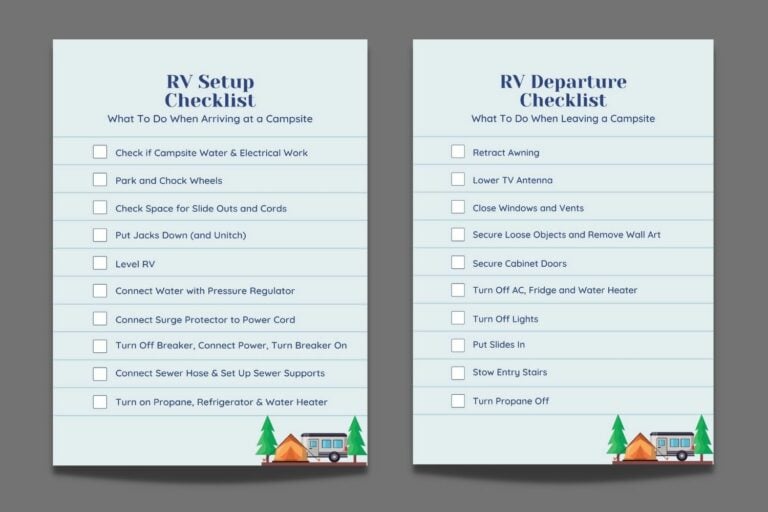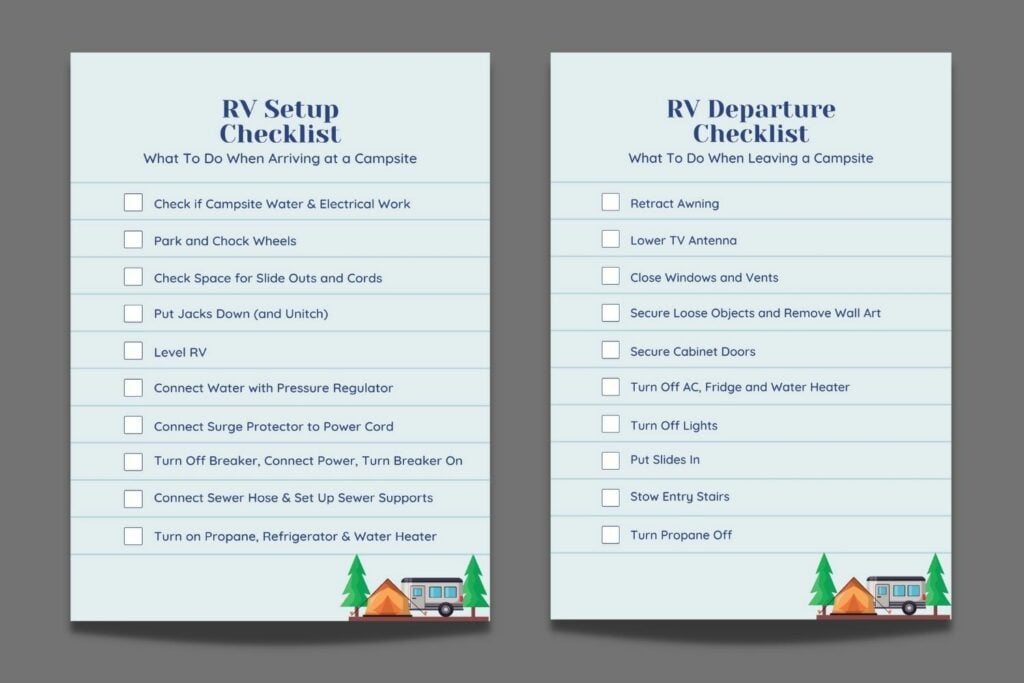This post may contain affiliate links. See our affiliate disclaimer here.
RV camping is a fun way to travel with the family. However, preparing for travel and setting up an RV can be an intimidating process for new RVers.
Our free, printable RV setup and RV departure checklists will help you avoid rookie RV mistakes. Download and print these crucial RV checklists now, and see below for more detailed instructions.
Contents
Free, Printable RV Checklists
Click here or click the image below to download your free, printable RV setup checklist and RV departure checklist.
RV Setup Checklist
Below are detailed descriptions of each step on our free, printable RV setup checklist. Please note that setup will vary a bit depending on your type of RV, but we tried to make a checklist that works for both travel trailers and motorhomes.
Check Campsite Water and Electric
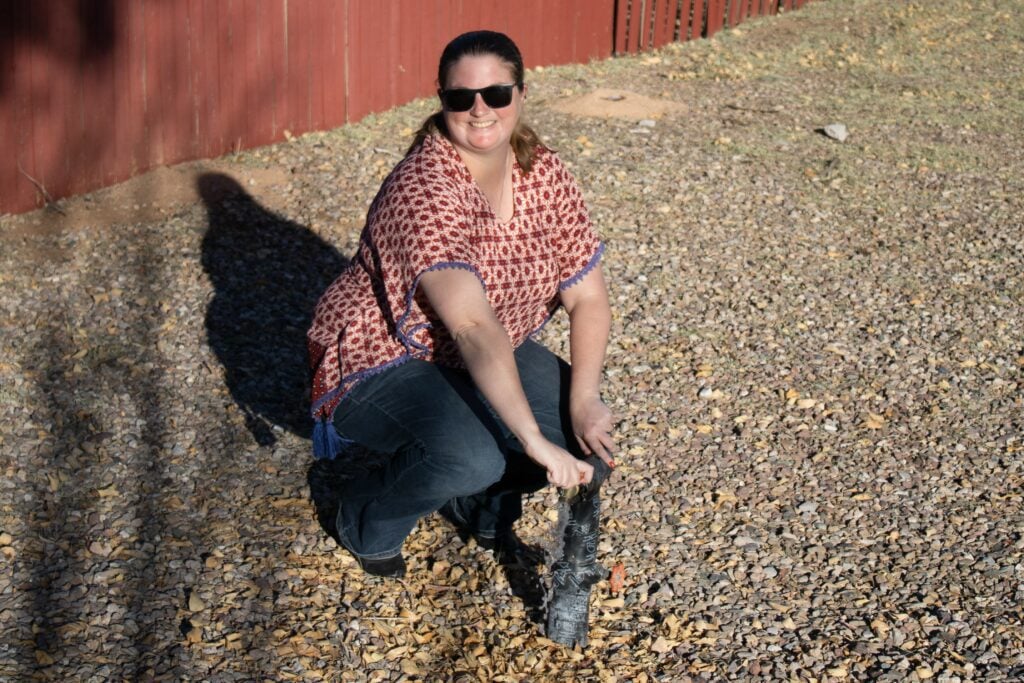
There is nothing worse than getting the RV parked and set up just to discover you need to move. That’s why the first item on our RV setup checklist is checking the campsite’s water and electric.
To test if the water works simply turn on the spigot and see if water flows out. To test the electricity, first turn off the breaker on the campsite power pole. Then, plug in your surge protector and turn the breaker back on.
If the appropriate lights on the surge protector are lit, you are good to go. If either the water or electric is not working properly, head to the office to ask for a different campsite.
Park and Chock Wheels
As soon as the RV is parked in the campsite, chock your tires to prevent the RV from rolling.
Check Space for Slides and Cords
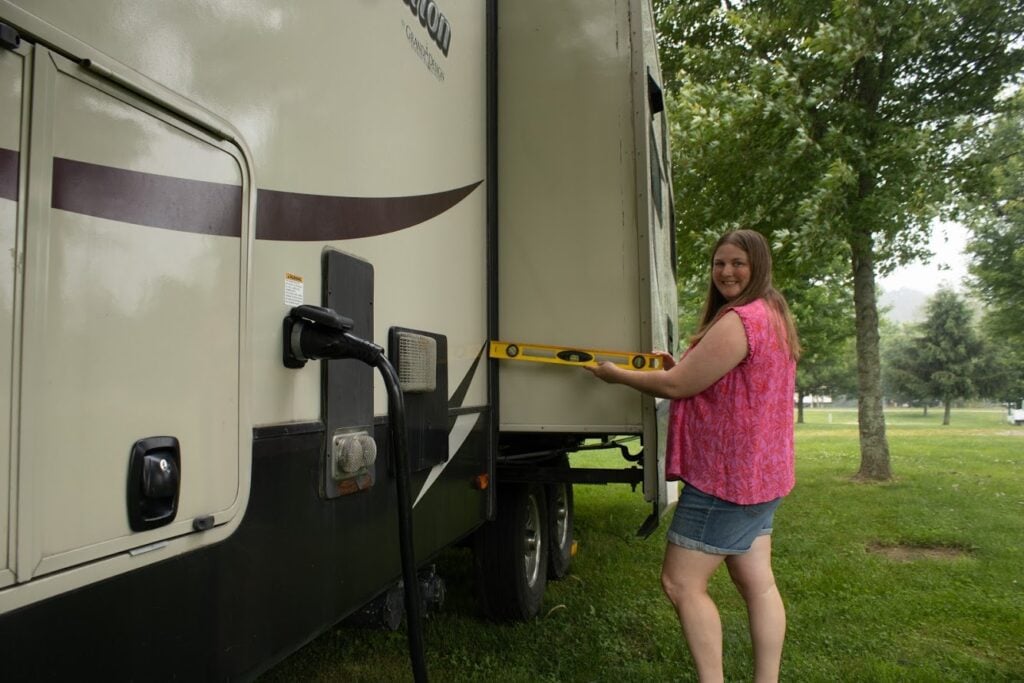
After chocking the tires, perform a few more checks before setting up the RV. Use a ruler or yard stick (we use a level with a ruler on it) to ensure there is sufficient room for your slide outs to come out without hitting any trees or the power pole.
If there is room for the slides, pull out your water hose, sewer hose and electric cord and verify that all of them will reach their hookup point.
Put Jacks Down and Unhitch and Level
Once you have confirmed that your RV is parked in the perfect spot, its time to get set up. This process will very greatly depending on your RV type and whether you have leveling jacks or just stabilizer jacks.
If your RV does not have automatic leveling, check the levelness with a manual level and pull the RV or trailer onto leveling blocks before unhitching. After unhitching the RV, put down the stabilizer jacks.
If you RV has an automatic leveling system, follow the instructions in your owner’s manual for leveling and/or unhitching the RV.
Note: These automated leveling systems may not be able to level your RV when the tilt is too severe. Before unhitching and/or auto-leveling, check the levelness of the RV (either manually or on your automated leveling system). If the RV has a major tilt, pull up on leveling blocks to help level the RV.
Connect Water Hose
Next, connect the RV to the campground water supply. Always connect a water pressure regulator on the end of the hose that attaches to the spigot.
Connect the regulator and hose to the spigot and connect the other end of the hose to the RV. Go inside the RV and open your kitchen and bathroom faucets to let any air out of the lines. Then, turn on the campground water.
Connect Power Cord
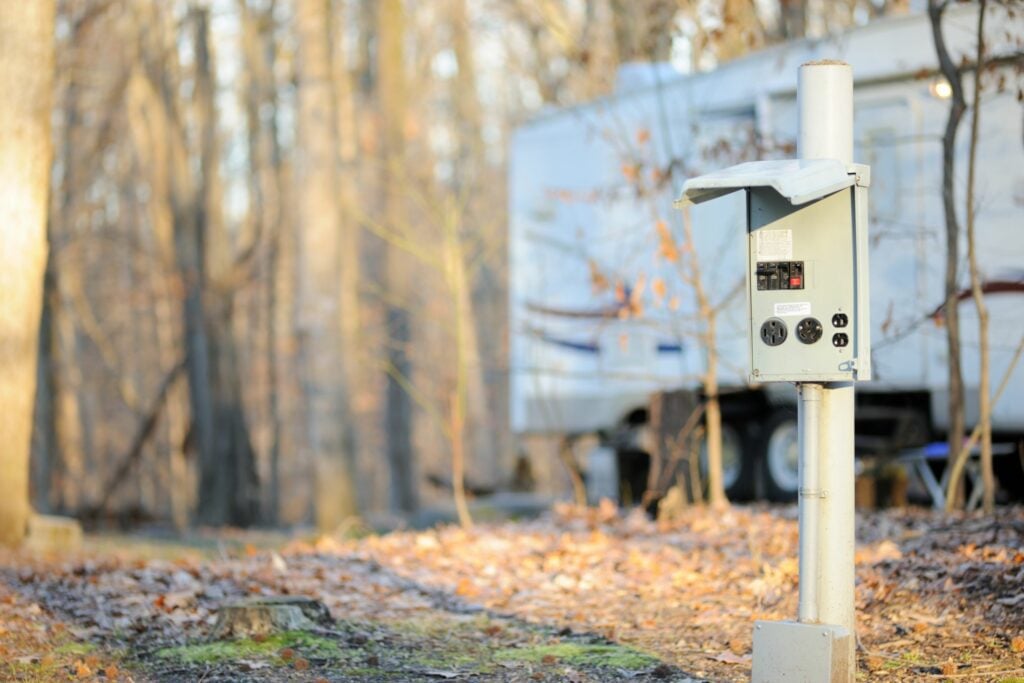
After connecting the water, it is time to connect the RV to shore power. Start by making sure the breaker on the campsite’s power pole is turned off. Then plug in the surge protector and plug the RV’s power cord into the surge protector and the RV.
Turn the breaker on, and check the indicators on the surge protector to verify the power is working properly.
Connect Sewer Hose
Last, but not least on our RV setup checklist is the sewer hose. Connect the sewer hose to the RV. Then extend the sewer hose to the campsite’s sewer connection.
Place sewer hose supports under the hose to ensure the waste is always flowing down. Use an elbow connector to connect the sewer hose to the campground sewer connection.
Start Camping
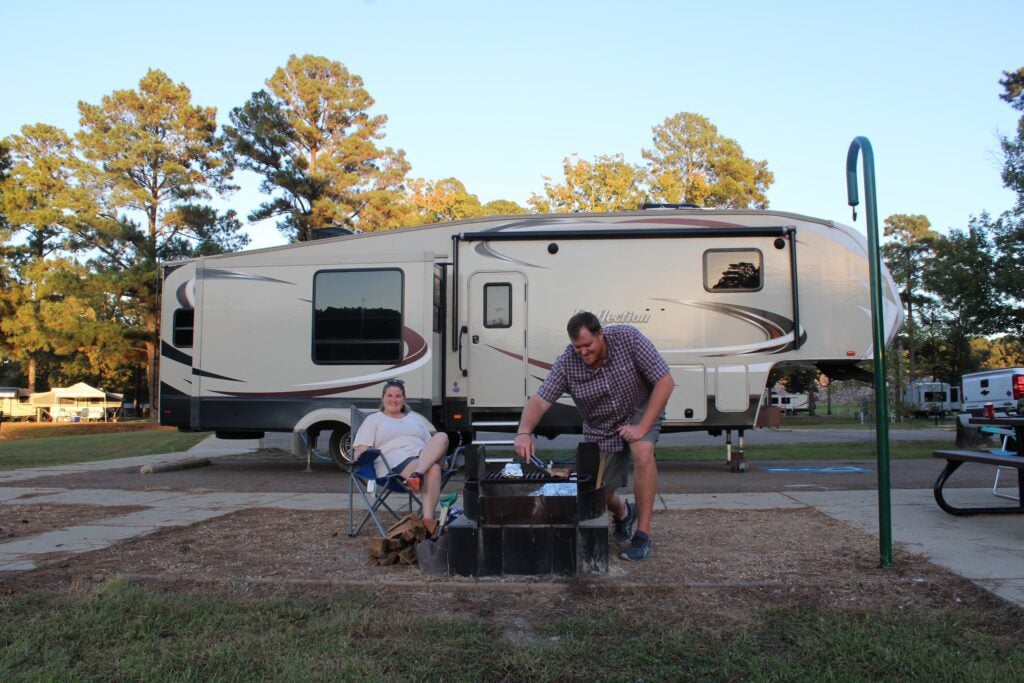
After you finish the RV setup checklist, all that is left to do is put the slides out and arrange the inside of camper. Then, you can pull out some chairs, start a fire and enjoy your trip!
RV Departure Checklist
Below are detailed descriptions of each step on our free, printable RV departure checklist. Please note that the RV teardown and departure process will vary depending on your type of RV. However, our checklist is designed to work for both travel trailers and motorhomes.
Secure Interior and Exterior Items
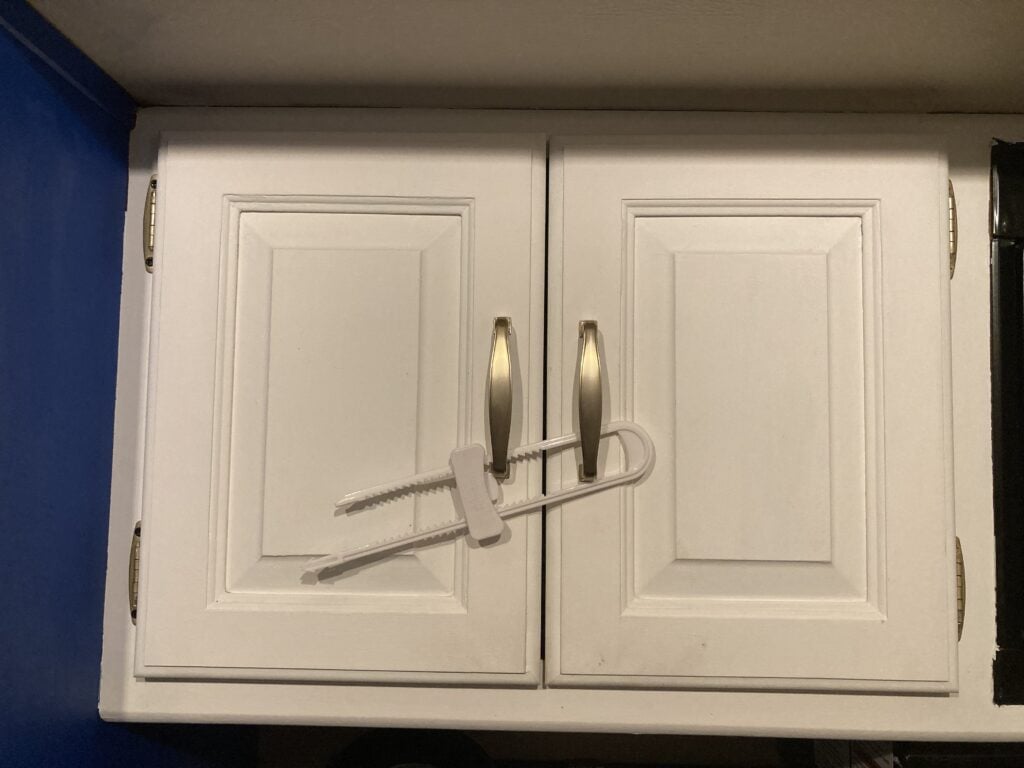
- Retract Awning: Make sure the awning is fully retracted and secured before travel.
- Lower the TV Antenna: Lower the TV antenna on the RV’s roof. There is usually a handle inside the RV to retract and extend the antenna.
- Close Windows and Vents: All windows and vents should be closed and secured before travel.
- Secure Loose Objects: Secure any loose objects, including décor, small kitchen appliances and wall art.
- Secure Cabinet Doors: Use child locks to secure cabinet doors.
- Turn Off Lights: Make sure all lights are turned off, so you do not drain the battery.
- Turn Off Appliances: The water heater, air conditioners, furnace and refrigerator should be turned off before travel.
- Put Slides In: Once everything is secured inside, pull your slide outs in.
- Stow Entry Stairs: Make sure the entry stairs are folded up and secured.
Turn Propane Off
After all propane-fueled appliances have been shut off, shut the valve on your propane tank. Propane should never be left on during travel.
Your refrigerator will keep food cold as long as you do not open the doors while it is off. When you arrive at your next campsite, turn the refrigerator back on and let it cool before opening.
Some RVers swear it is okay to leave your propane on during travel, but I strongly disagree. Click here to see 5 common arguments among RV campers.
Dump RV Holding Tanks
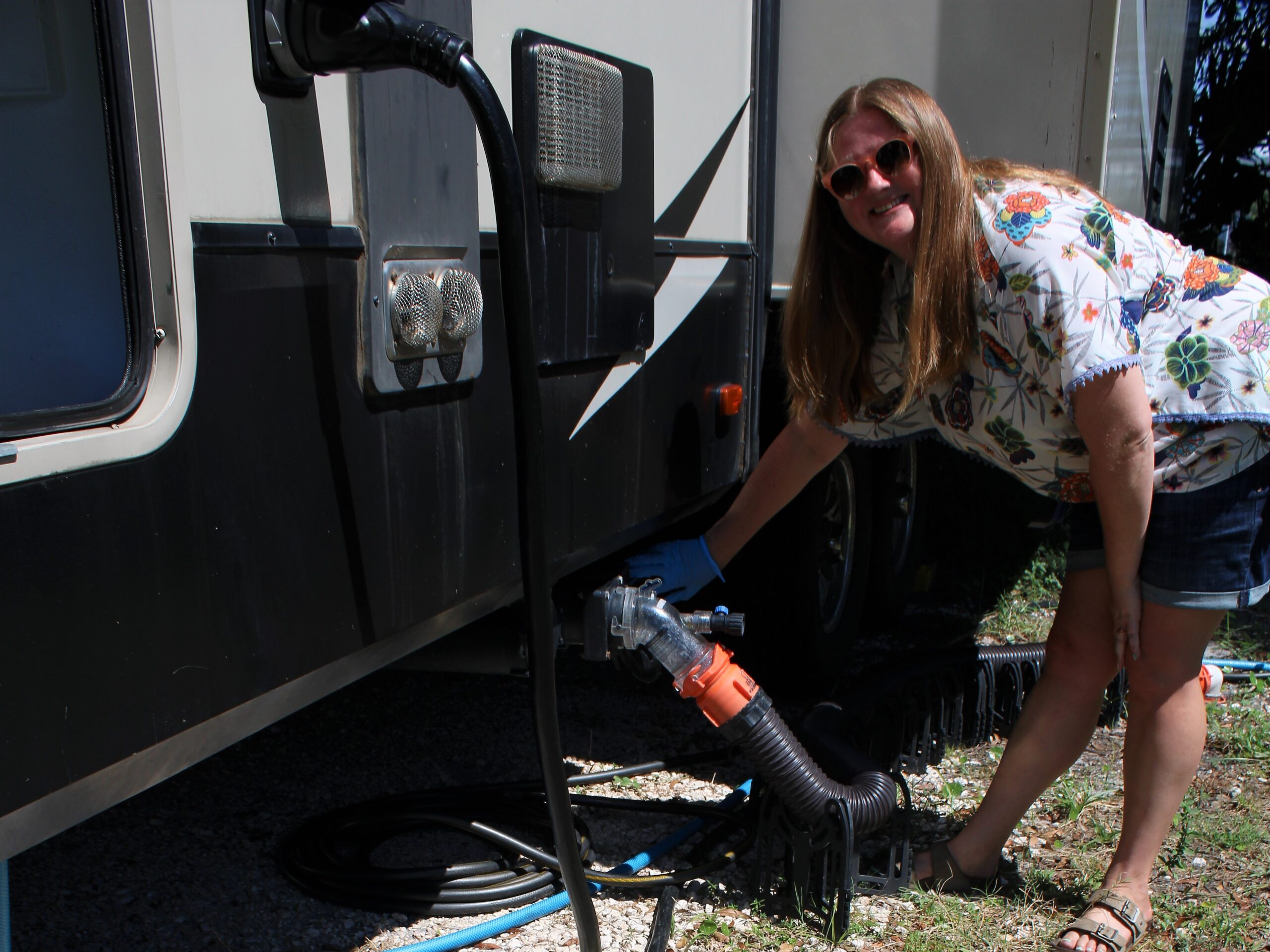
Before departing the RV campground, you should dump the RV’s black and gray tanks to reduce weight while traveling. If your campsite does not have a sewer connection, dump tanks at the campground’s dump station before leaving.
Fill Fresh Water for Travel
The next item on our RV departure checklist is adding a few gallons of fresh water to your RV’s tank. After adding the water, turn your water system to the dry camping setting.
With water in the tank and the dry camping setting turned on, you can use the water pump to flush the toilet and wash hands during your trip. Only put a few gallons of water in the tank to avoid add more weight than necessary.
During travel, only turn the pump on when using water. The pump should be off during travel in case jostling causes a faucet to open.
Disconnect Hoses
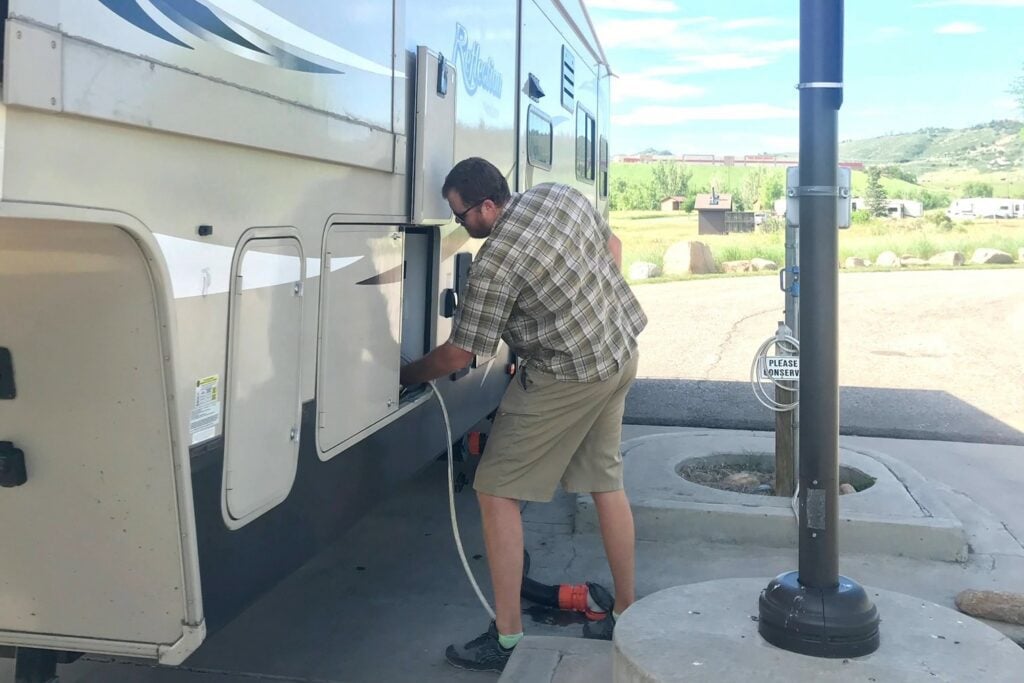
After dumping your holding tanks and filling the fresh water, disconnect the water and sewer hoses from the RV and store them for travel.
Grease Trailer Hitch
If you are camping in a travel trailer or fifth wheel, the next RV departure checklist task is greasing the hitch. Using a paint brush, apply a thin layer of grease over the entire ball.
Hitch Up and Raise Jacks
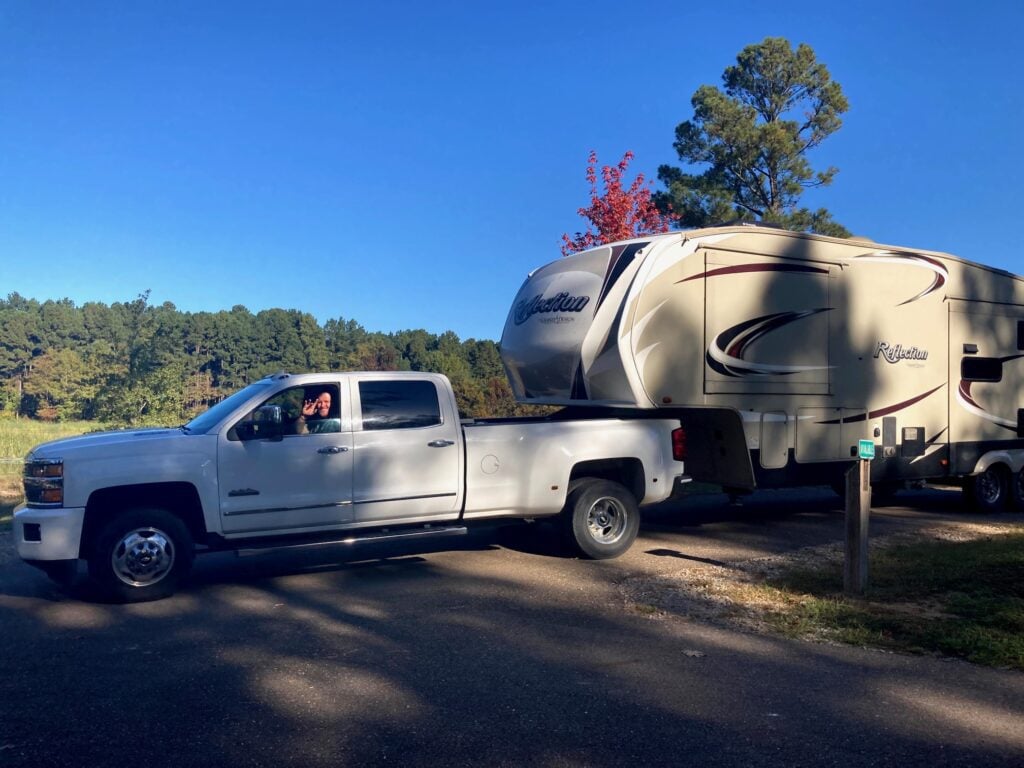
Hitch your trailer to the tow vehicle. Once the hitch is locked, raise all jacks.
Remove Wheel Chocks
Remove chocks from behind RV tires.
Disconnect RV Power
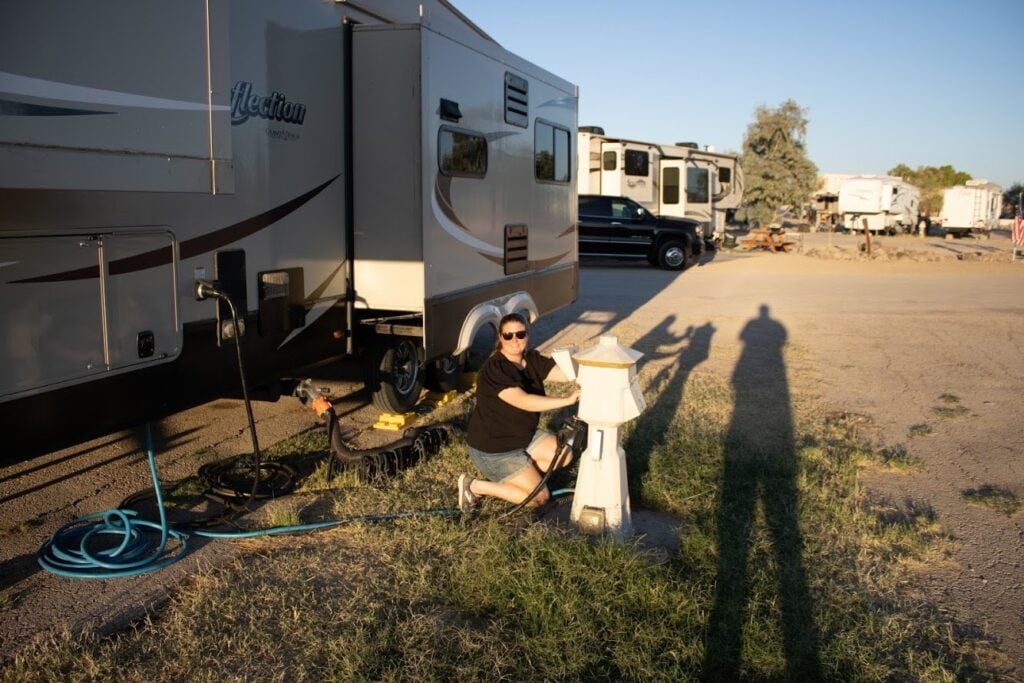
Turn the breaker off at the power pole, then disconnect the power cord from the pole and the RV. Store the cord for travel.
Check Lights
Test the brake lights, turn signals and caution lights on the RV.
Check Tire Pressure
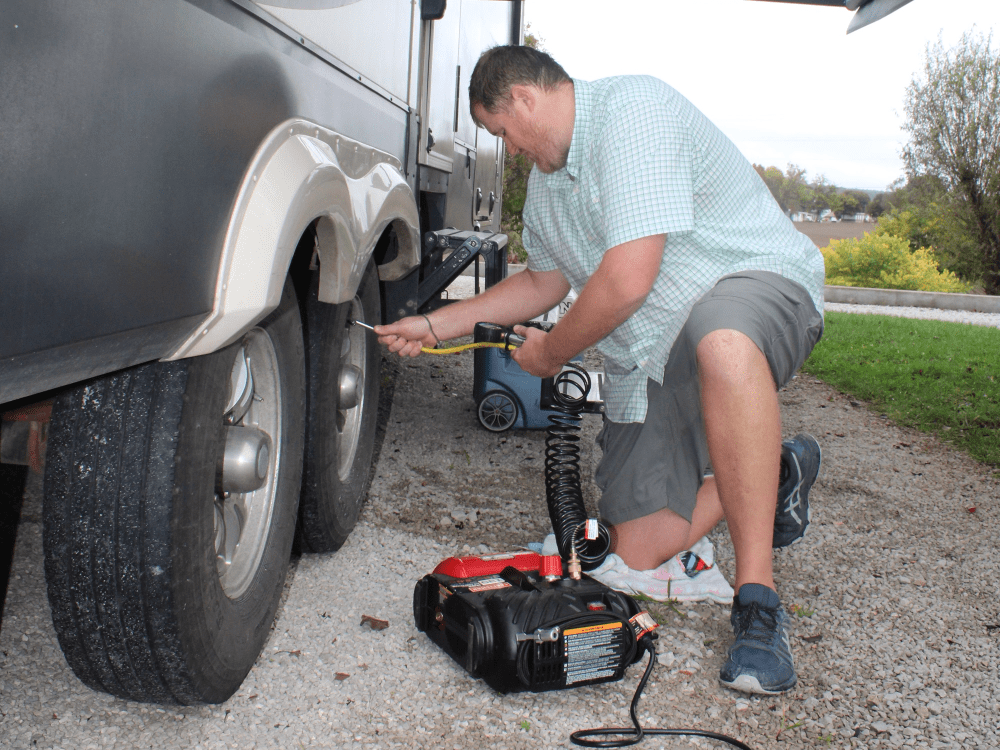
Always check tire pressure before hitting the road in your RV. The recommended tire pressure is noted on the sidewall of your tires. Traveling with an air compressor is ideal, so you can adjust tire pressure before driving.
Do a Final Walkaround
Do a final walk around the RV to verify nothing is unsecured or out of place. After pulling out of the campsite, conduct one final check of the campsite to make sure you did not leave anything behind. Then read our RV travel day tips before hitting the road!
More RV Camping Resources
In addition to our free RV setup checklist and RV departure checklist, we offer several other free and paid resources for new RV owners.
RV Maintenance eBook
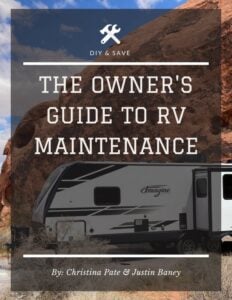
Labor fees for RV maintenance and repair typically costs over $100 per hour. At this rate, many RV owners are paying thousands of dollars each year for someone else to perform simple maintenance tasks on their RV.
While there are some jobs that should be left to the professionals, most routine RV maintenance does not require any special skills. Our RV maintenance eBook, The Owner’s Guide to RV Maintenance, provides step by step instructions on how to complete essential upkeep tasks.
RV Fuel Calculator
Fuel is the largest expense on many road trips. Use our RV Trip Fuel Cost Calculator to estimate how much an RV road trip will actually cost you.
RV Water Use Calculator
When camping without full hookups, water usage is a major concern. Our RV Water Tank Size Calculator allows you to estimate how long your family can camp without dumping your tanks.
With our RV setup checklist, RV departure checklist and other RV resources, you should be ready for your first camping trip. What other questions do you have about RV travel and maintenance? Drop them in the comments section below.
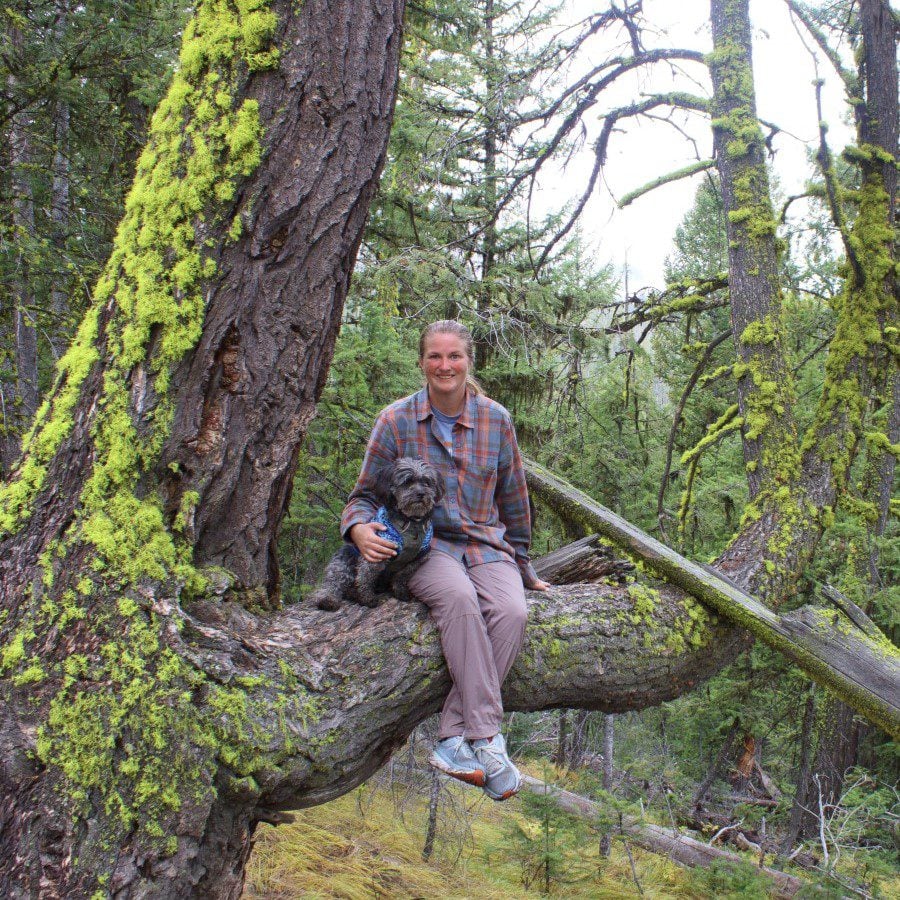
Christina Pate is a seasoned full-time RVer who, along with her husband Justin, has journeyed across the US, Canada, and Mexico. Drawing from her extensive travels, RV repairs and RV renovations, she founded Travels with Ted to guide and inspire fellow RV enthusiasts. Christina is also the co-author of The Owner’s Guide to RV Maintenance and the creator of My RV Log Book.

